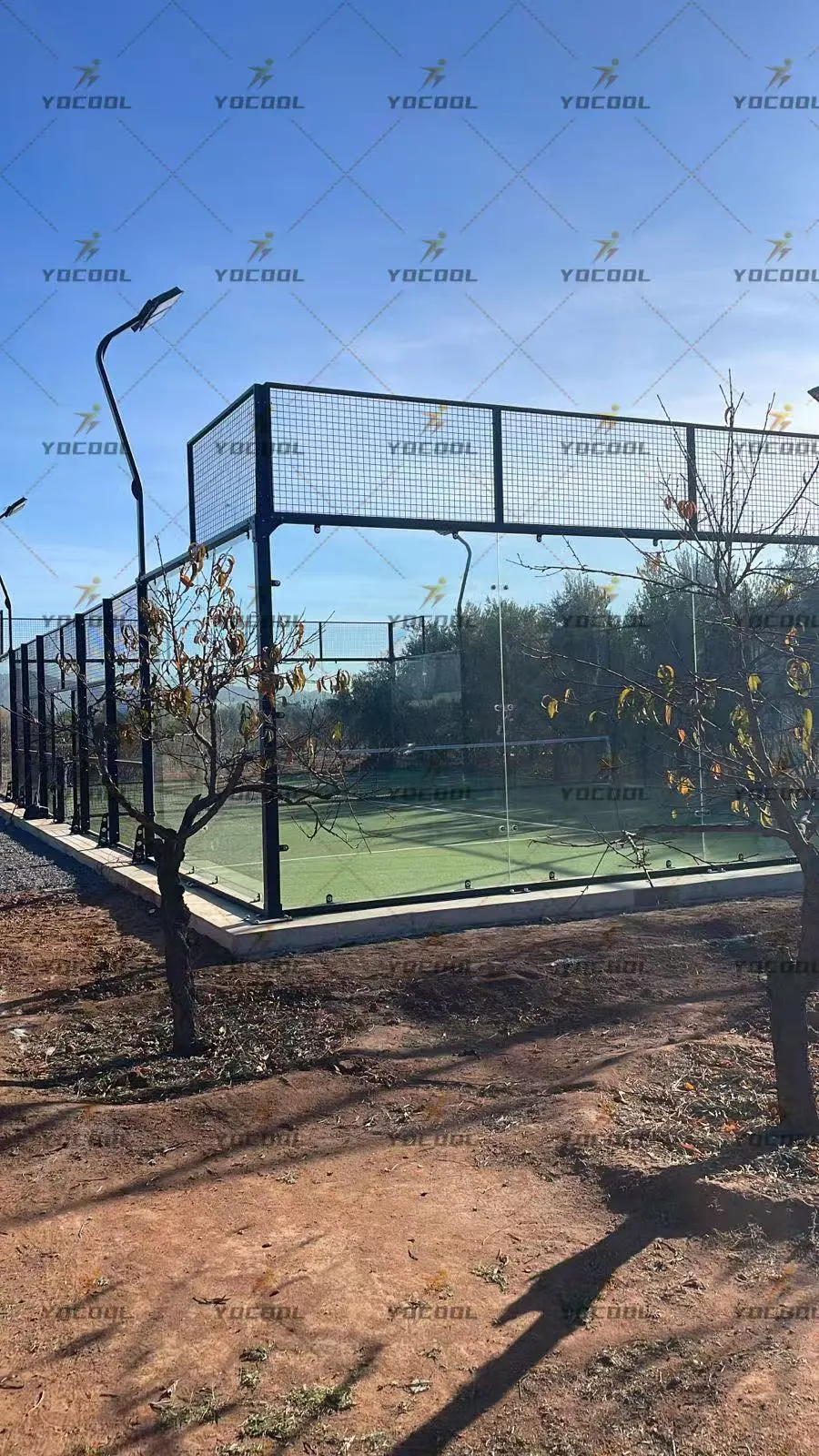

Padel tennis has swiftly grown from a niche sport into a global sensation, thanks to its dynamic gameplay, accessibility, and social appeal. As demand for purpose-built courts rises, developers and enthusiasts are prioritizing court structures that deliver performance, durability, and aesthetic excellence. Whether it's for private clubs, public sports centers, or residential communities, investing in the right padel court solution is essential for long-term value and player satisfaction. The right balance between materials, space optimization, and gameplay standards begins with understanding the wide spectrum of options in padel tennis fields.

Designing a padel facility frequently begins with a single padel court installation, especially in urban areas where space is a premium. This setup allows for a functional, high-quality playing experience while maintaining a compact footprint. When built with professional-grade turf, tempered glass walls, and galvanized steel frames, the single padel court meets global competition standards while being cost-effective. It also provides opportunities for clubs to test community engagement before expanding into larger complexes, making it a smart starting point for padel infrastructure.
Optimal arrangement of padel tennis fields can enhance gameplay, increase spectator engagement, and streamline tournament logistics. Rather than stacking courts side-by-side without foresight, modern facilities intersperse courts with walkways, fencing buffers, and designated viewing areas. When planning padel tennis fields, materials used for flooring, lighting, and structural frames must meet rigorous demands for bounce consistency, player mobility, and long-term durability. This thoughtful design also supports inclusivity by accommodating players of various skill levels and physical abilities.
Compact and efficient, the single court padel option allows real estate developers to offer premium sports amenities without compromising space for other functions. Whether part of a rooftop fitness hub or a shared residential recreation area, single court padel systems appeal to both investors and end users. These courts often include modular fencing and surface systems, simplifying installation and maintenance. With local governments promoting active lifestyles, single-court solutions are increasingly funded through public-private partnerships, making them highly scalable.
The benefits of indoor padel tennis courts extend far beyond weather protection. Controlled lighting, acoustic optimization, and climate stability help create a professional playing environment suitable for leagues and academies. Building an indoor padel tennis venue also enhances brand consistency, as court colors, logos, and seating layouts can be fully customized. These environments enable year-round access, increase peak-hour availability, and support media-friendly events — all of which contribute to long-term revenue growth for sports organizations and facility managers.
The charm of the outdoor padel court lies in its openness, natural lighting, and accessibility to diverse populations. Often installed in parks, beach clubs, and school campuses, these courts are built with UV-resistant materials, high-drainage turf, and anti-corrosion frames to withstand climate variability. Installing an outdoor padel court in underserved areas promotes inclusive fitness initiatives and helps expand the sport's demographic reach. Moreover, these courts often become community hubs, drawing families and youth into an active lifestyle.
From synthetic grass to tempered glass and galvanized steel posts, high-quality components directly influence playability and maintenance costs. Certified surface materials ensure proper bounce, reduce injury risk, and extend court longevity. Always choose manufacturers who adhere to international standards.
Yes. Modular courts allow for quicker installation, lower transportation costs, and easy relocation. These advantages make them ideal for temporary tournaments, seasonal resorts, or trial urban placements. Despite their flexibility, many models now match permanent courts in performance.
Regular inspections of net tension, turf wear, drainage systems, and wall alignment are essential. For outdoor padel courts, it’s important to clear debris, wash glass panels, and monitor UV damage. Indoor venues should regulate temperature and humidity to preserve turf quality.
Q: How much space do I need to install a single padel court?
A: A standard single padel court requires a footprint of approximately 20m x 10m, plus buffer space for fencing and spectator zones. Consideration for walkways and adjacent facilities can increase total space needs.
Q: Are padel tennis fields suitable for professional tournaments?
A: Absolutely. When designed to international specifications, padel tennis fields can host national and international tournaments. Court surfacing, lighting, and fencing must meet federation standards to ensure fairness and player safety.
Q: What is the benefit of installing an indoor padel tennis court over an outdoor one?
A: Indoor padel tennis courts provide weather-proof environments, making them ideal for year-round operation. They also allow better branding, acoustics, and lighting control — crucial for high-end venues and televised matches.
Q: How do I choose between indoor and outdoor padel court options?
A: It depends on your location, audience, and goals. Outdoor padel court setups are cost-effective and community-friendly, while indoor options support consistent play and advanced experiences. Budget, space, and climate all play key roles.
Q: Is it possible to expand from a single court padel setup to a full complex later?
A: Yes. Many facilities start with a single court padel installation and expand over time. Modular fencing, consistent surfacing, and scalable layouts allow seamless future growth.
Starts with Strategic Padel Court Solutions
Sports Facilities with Innovative Padel Court Construction
Revolutionize Sports Facilities with Custom Padel Court Construction
Master Industrial Racquetball Performance with Professional Equipment
Industrial Expansion Begins with Strategic Padel Court Construction Investments
Construct Future-Ready Sports Facilities with Industrial-Grade Padel Courts